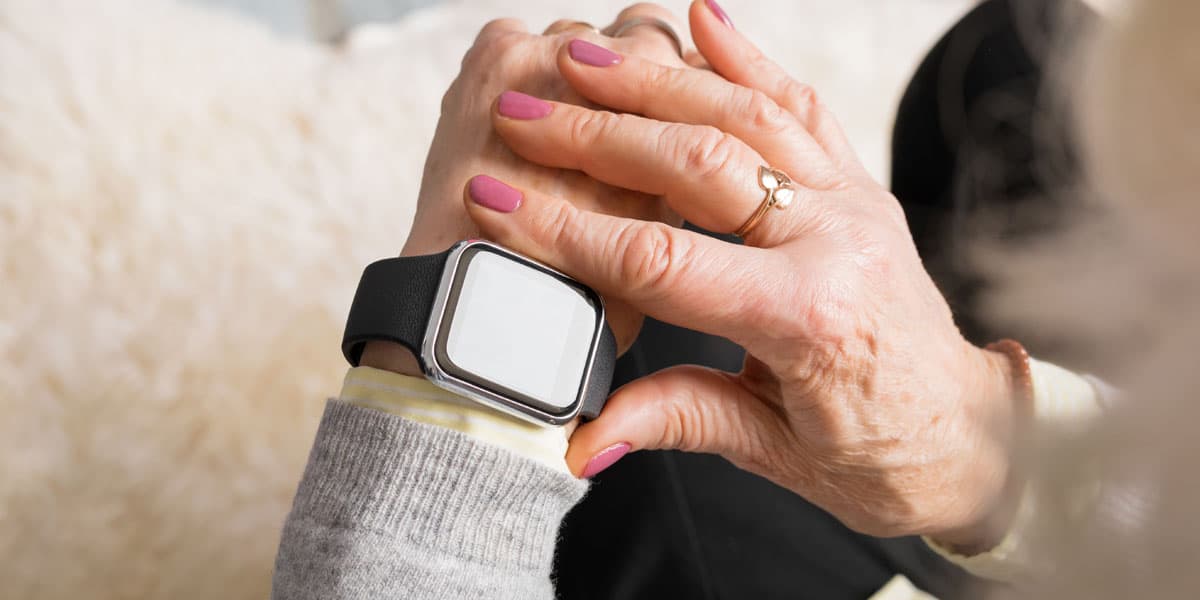
Patient-centric trials recruit double the number of patients in almost half the time. When trials are highly patient-focused, products are also 19% more likely to reach the market, as trials that take patient happiness seriously have fewer drop-outs. Wearable technology plays an important role in this, and in this article, we’ll explore how.
For the average person, advancements in wearable tech and the development of the “Internet of Things” has meant incorporating devices such as fitness trackers (like Fitbits or Apple watches) into their day-to-day lives. These devices can measure your heart rate, how many steps you’ve taken in a day, how many calories you burn, or how many hours you’ve slept to give you a picture of your overall health that can be extremely valuable.
Advanced forms of wearable technology could make (and indeed, are already making) clinical trial participation easier for patients. Let’s take a look at some of the ways in which wearable sensors have changed the landscape of healthcare and clinical research.
What Are Wearable Sensors?
Although related, popular wearable tech devices are not the same as wearable sensors. Day-to-day activity trackers such as Fitbit simply aren’t accurate enough to use in a clinical setting (as any Fitbit owner will know, excessive hand gestures can result in an over-inflated step count!). Wearable sensors, on the other hand, provide constant, real-time physiological data (such as heart rate, electrical activity, or ejection fraction) with the required degree of precision for a clinical study.
When enough of this continuous, granular level of data has been captured, structured, and analysed, it enables patients and healthcare professionals to prevent adverse health outcomes, by intervening before a negative outcome occurs. Data is gathered in real-time and from a real-life setting, which means it’s actionable, applicable, and can create an empowering experience for patients by raising their own awareness of their key health indicators.
Examples Of Advanced Medical Sensors
- Skin patches: External skin patches that stick to the skin like a Band-Aid, use skin contractions to deduce information about heart rate, movement, muscle contractions, and breathing.
- Internal sensors: Digital or “smart” pills that the patient swallows track and send health information from within a person’s body. Proteus provides a smart pill that, once swallowed, can alert a healthcare professional or caregiver of the time of day, the size of the dose, and the type of medication that the patient took.
Such devices can capture data continuously and in real-time, streaming it and sending it to a connected device such as a smartphone or tablet. These devices can capture data when the person is both in motion and at rest and can provide an audit trail of activity/inactivity and other data which is essential for clinical insight.
Wearable Sensors & Virtual Clinical Trials
Wearable sensors help to enable virtual clinical trials, also known as remote or decentralised trials. With the assistance of home nursing, clinical researchers can use wearable sensors to track activity such as patients reactions to a particular drug dosage. This means, in some cases, patients do not have to travel to a clinical trial site at all or at least have to do so far less frequently.
By reducing the need for study participants to travel in order to facilitate the collection of patient data, using wearable sensors helps to address one of the main reasons patients drop out of clinical trials, drastically improving patient retention.
Conducting some elements of clinical trials within patients’ homes using wearable technology as opposed to requiring on-site tests, helps many patients who may already be living with an illness avoid unnecessary travel costs, and other strains.
Common Pitfalls In Using Wearable Sensors
Using wearable sensors to facilitate virtual trials has many benefits in terms of data collection and applicability. However, there are also some common pitfalls to be aware of, as these may hinder the trial’s success.
Firstly, highly skilled nursing staff are necessary to make sure all the required data is captured, and the wearable devices are placed and used correctly.
Secondly, a major pitfall of using wearable sensors in virtual trials is that some patients do not follow the correct protocol for wearing the devices, as some can feel invasive and confining to the patient. A high level of patient care and attention may be necessary to acclimate the patient, which can be achieved by regular check-ins.
The great news is that as technology advances, these smart sensors are becoming less invasive, uncomfortable, bulky or confining, and much more user-friendly.
As patients perceive these devices as less of a nuisance or hindrance to their daily lives, they are becoming more likely to comply with the necessary protocols of at-home virtual trials.
How Do Wearable Sensors Enable & Enhance Virtual Trials?
Wearable sensors enable, enhance, and improve virtual trials in a number of ways.
1. They offer continuous, real-time data capture
Wearable sensors allow investigators to continuously capture patient data in real-time. As wearables become smaller, less conspicuous and more convenient, patients are less reluctant to wear them and more likely to follow protocol. In this way, sensors worn in the convenience of a patient’s home as they go about their lives may help capture more applicable physiological data than on-site trials, which are not continuous and may be impacted by bias as a result of the clinical setting.
2. They offer actionable data
Data gathered from patients’ wearable sensors is available in real-time,which means an investigator can intervene and talk to a patient or their carers to see if further medical action is required. In this way, data can potentially help prevent an adverse health event. This gives patients and carers peace of mind.
3. They offer reliable data
The data that sensors provide is reliable and accurate, provided that they are worn correctly. For example, Biofourmis claims with evidence that they can predict heart failure 14 days in advance with an accuracy greater than 90%.
4. They improve patient retention
The convenience created by use of wearable sensors and remote trials makes patients happier, more satisfied with their participation, and therefore more likely to stay in the trial.
5. Reduction in skilled nursing costs
New wearables greatly reduce the cost of home nursing, increasing return on investment for properly designed virtual trials. Although some home nursing will still be necessary to check in with patients and ensure sensors are being correctly placed and operated, the cost drops significantly with the automation of data collection.
What The Results Tell Us
More and more studies are suggesting that incorporating wearable sensors and devices into clinical trials can drastically improve patient retention and engagement, and pharma companies are paying heed.
AbbVie, Novartis and Pfizer have all started to incorporate wearables into their latest clinical trials, furthering the shift towards a patient-centric paradigm in clinical research.







